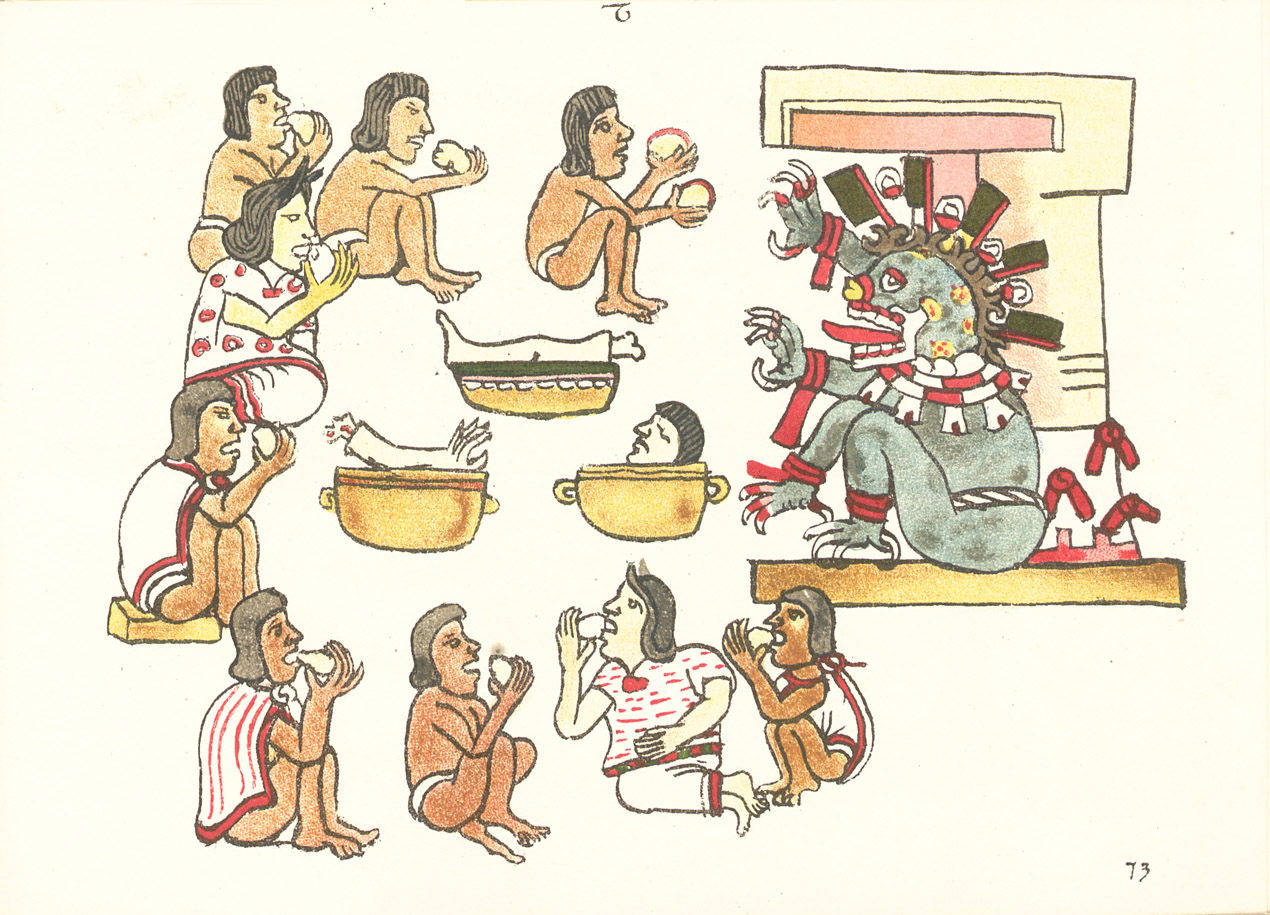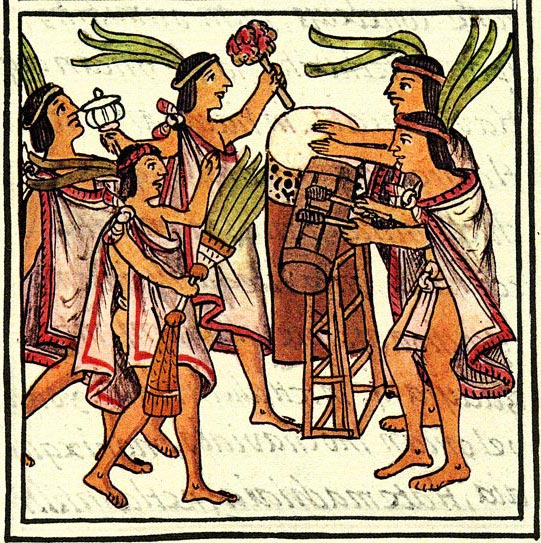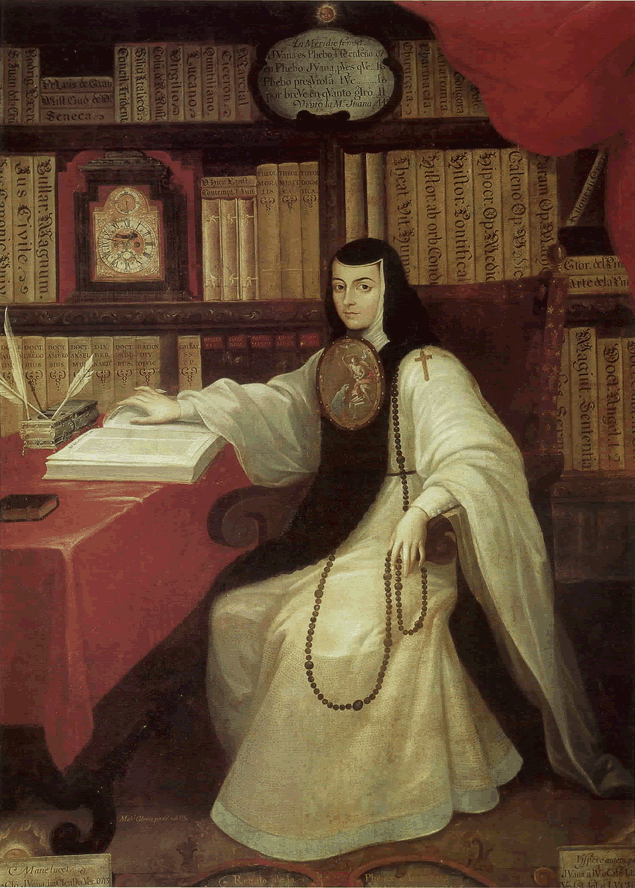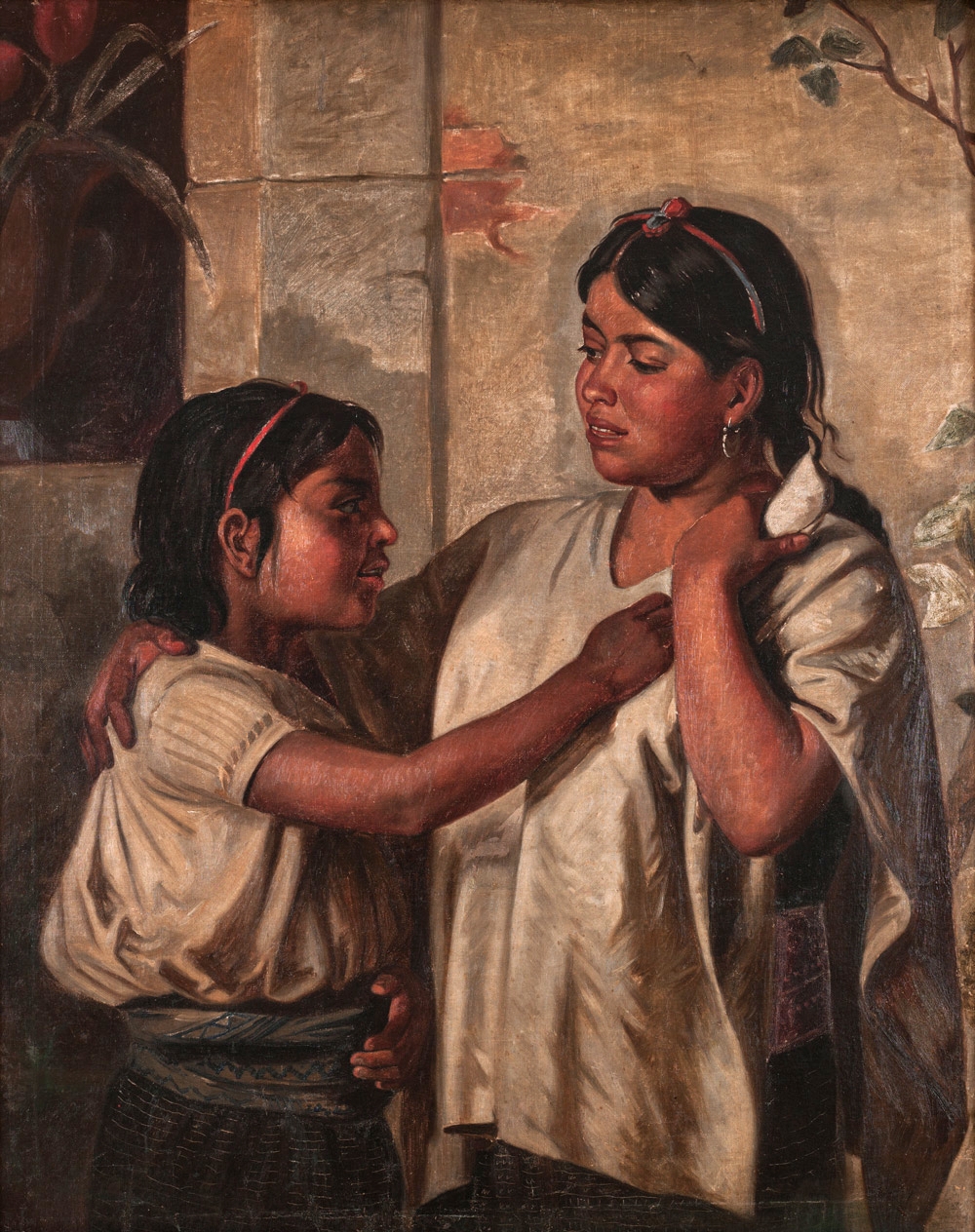|
Fernando De Alva Cortés Ixtlilxóchitl
Fernando de Alva Cortés Ixtlilxóchitl (between 1568 and 1580, died in 1648) was a nobleman of partial Aztec noble descent in the Spanish Viceroyalty of New Spain, modern Mexico; he is known primarily for his works chronicling indigenous Aztec history. Life Born between 1568 and 1580, Alva Cortés Ixtlilxóchitl was a direct descendant of Ixtlilxochitl I and Ixtlilxochitl II, who had been '' tlatoque'' (rulers) of Texcoco. He was descended from an indigenous grandparent and three Spanish grandparents. He was also the great-great-grandson of Cuitláhuac (Cuitláhuac was the eleventh son of the ruler Axayacatl and a younger brother of Moctezuma II, the previous ruler of Tenochtitlan.), the penultimate Aztec ruler of Tenochtitlan and victor of La Noche Triste. On the death of his eldest brother in 1602, he was declared by a royal decree heir to the titles and possessions of his family. The property, however, does not appear to have been large, as he complained in 1608 of the depl ... [...More Info...] [...Related Items...] OR: [Wikipedia] [Google] [Baidu] |
Aztec
The Aztecs () were a Mesoamerican culture that flourished in central Mexico in the post-classic period from 1300 to 1521. The Aztec people included different ethnic groups of central Mexico, particularly those groups who spoke the Nahuatl language and who dominated large parts of Mesoamerica from the 14th to the 16th centuries. Aztec culture was organized into city-states ('' altepetl''), some of which joined to form alliances, political confederations, or empires. The Aztec Empire was a confederation of three city-states established in 1427: Tenochtitlan, city-state of the Mexica or Tenochca; Texcoco; and Tlacopan, previously part of the Tepanec empire, whose dominant power was Azcapotzalco. Although the term Aztecs is often narrowly restricted to the Mexica of Tenochtitlan, it is also broadly used to refer to Nahua polities or peoples of central Mexico in the prehispanic era, as well as the Spanish colonial era (1521–1821). The definitions of Aztec and Aztecs h ... [...More Info...] [...Related Items...] OR: [Wikipedia] [Google] [Baidu] |
Tlalmanalco
Tlalmanalco is a municipality located in the far south-eastern part of the State of Mexico. The municipal seat and second largest town in the municipality is the town of Tlalmanalco de Velázquez The name is from the Nahuatl language, meaning “flat area.” The municipality's seal shows flat land, with a pyramid on it, representing its pre-Hispanic history, surrounded by small mountains, which is how the area was represented in Aztec codices. The municipality is bordered by the municipalities of Chalco, Ixtapaluca, Cocotitlan, Temamatla, Tenango del Aire, Ayapango and Amecameca. It also shares a border with the neighboring state of Puebla. Much of the municipality borders the Iztaccihuatl-Popocatepetl National Park. For this reason, Iztaccihuatl volcano dominates the landscape. The town has been designated as a “Pueblo con Encanto” (Town with Charm) by the government of the State of Mexico. History According to archeological findings, there was a village stronghold in ... [...More Info...] [...Related Items...] OR: [Wikipedia] [Google] [Baidu] |
Luis De Velasco, Marqués De Salinas
Luis is a given name. It is the Spanish form of the originally Germanic name or . Other Iberian Romance languages have comparable forms: (with an accent mark on the i) in Portuguese and Galician, in Aragonese and Catalan, while is archaic in Portugal, but common in Brazil. Origins The Germanic name (and its variants) is usually said to be composed of the words for "fame" () and "warrior" () and hence may be translated to ''famous warrior'' or "famous in battle". According to Dutch onomatologists however, it is more likely that the first stem was , meaning fame, which would give the meaning 'warrior for the gods' (or: 'warrior who captured stability') for the full name.J. van der Schaar, ''Woordenboek van voornamen'' (Prisma Voornamenboek), 4e druk 1990; see also thLodewijs in the Dutch given names database Modern forms of the name are the German name Ludwig and the Dutch form Lodewijk. and the other Iberian forms more closely resemble the French name Louis, a deri ... [...More Info...] [...Related Items...] OR: [Wikipedia] [Google] [Baidu] |
Codex Ixtlilxochitl
Aztec codices ( nah, Mēxihcatl āmoxtli , sing. ''codex'') are Mesoamerican manuscripts made by the pre-Columbian Aztec, and their Nahuatl-speaking descendants during the colonial period in Mexico. History Before the start of the Spanish colonization of the Americas, the Mexica and their neighbors in and around the Valley of Mexico relied on painted books and records to document many aspects of their lives. Painted manuscripts contained information about their history, science, land tenure, tribute, and sacred rituals. According to the testimony of Bernal Díaz del Castillo, Moctezuma had a library full of such books, known as ''amatl'', or ''amoxtli,'' kept by a ''calpixqui'' or nobleman in his palace, some of them dealing with tribute. After the conquest of Tenochtitlan, indigenous nations continued to produce painted manuscripts, and the Spaniards came to accept and rely on them as valid and potentially important records. The native tradition of pictorial document ... [...More Info...] [...Related Items...] OR: [Wikipedia] [Google] [Baidu] |
Alfredo Chavero
Alfredo Chavero (1841–1906) was a Mexican archaeologist, politician, poet, and dramatist. According to Howard F. Cline, "Chavero's most enduring claim to remembrance rests...on iscompletion and extension of Ramírez's plans to republish major native histories and his editorship of pictorial documents." Research Chavero conducted numerous investigations on Mexican antiquities. He published ''Historia Antigua de Mexico'', as well as several works on Aztec archaeology, especially on ancient monuments. While excavating the pyramids of Cholula, he discovered some idols that are now in the National Museum of Mexico. His books are often referred to because of his research on Father Sahagún and to the Sun Stone. . Political career Chavero became a member of the Mexican Congress in 1869. He supported the Mexican presidents Benito Juárez, Sebastián Lerdo de Tejada, Manuel González, and Porfirio Díaz in succession, notwithstanding their different policies. On 25 June 1879 ... [...More Info...] [...Related Items...] OR: [Wikipedia] [Google] [Baidu] |
Mexica
The Mexica (Nahuatl: , ;''Nahuatl Dictionary.'' (1990). Wired Humanities Project. University of Oregon. Retrieved August 29, 2012, frolink/ref> singular ) were a Nahuatl-speaking indigenous people of the Valley of Mexico who were the rulers of the Aztec Empire. The Mexica established Tenochtitlan, a settlement on an island in Lake Texcoco, in 1325. A dissident group in Tenochtitlan separated and founded the settlement of Tlatelolco with its own dynastic lineage. In 1521, they were conquered by an alliance of Spanish conquistadors and indigenous people including the Tlaxcaltecs led by Hernán Cortés. Names The ''Mexica'' are eponymous of the place name Mexico (''Mēxihco'' ), originally referring to the interconnected settlements in the valley that is now Mexico City. The group was also known as the Culhua-Mexica in recognition of its kinship alliance with the neighboring Culhua, descendants of the revered Toltecs, who occupied the Toltec capital of Tula from the 1 ... [...More Info...] [...Related Items...] OR: [Wikipedia] [Google] [Baidu] |
Fernando Alvarado Tezozómoc
Hernando (de) Alvarado Tezozómoc was a colonial Nahua noble. He was a son of Diego de Alvarado Huanitzin (governor of Tenochtitlan) and Francisca de Moctezuma (a daughter of Moctezuma II). Tezozómoc worked as an interpreter for the Real Audiencia. Today he is known for the '' Crónica Mexicayotl'', a Nahuatl-language history.León-Portilla, M. 1992, ''The Broken Spears: The Aztec Accounts of the Conquest of Mexico.'' Boston: Beacon Press, Ancestry Importance Fernando de Alvarado Tezozómoc was also a chronicler of some note, pertaining to a group of mestizo chroniclers with Fernando de Alva Cortés Ixtlilxóchitl, Diego Muñoz Camargo and Chimalpahin Domingo Francisco de San Antón Muñón Chimalpahin Quauhtlehuanitzin (1579, Amecameca, Chalco—1660, Mexico City), usually referred to simply as Chimalpahin or Chimalpain, was a Nahua annalist from Chalco. His Nahuatl names () mean "Runs S .... Notes A keeper of “The Black ink” A learned Nahua. ... [...More Info...] [...Related Items...] OR: [Wikipedia] [Google] [Baidu] |
Lorenzo Boturini Bernaducci
Lorenzo Boturini Benaducci (also Botterini) 1698, Sondrio, Italy – 1749, Madrid) was a historian, antiquary and ethnographer of New Spain, the Spanish Empire's colonial dominions in North America. Early life Born in Italy of noble parentage, Lorenzo Boturini Benaducci studied in Milan and lived in Trieste and Vienna. He was a knight of the Holy Roman Empire. Forced to flee Austria because of the war with Spain, Boturini arrived in Spain via England and Portugal. In Madrid he met the Condesa de Santibáñez, oldest daughter of the Condesa de Moctezuma, who authorized him to collect a pension due her, as a descendant of the Aztec Emperor Moctezuma II, from the royal treasury in New Spain. In New Spain Boturini went to New Spain in 1736, where he remained eight years, exploring remote regions and, in the words of Prescott, "living much with the natives, passing his nights sometimes in their huts, sometimes in caves, and the depths of the lonely forests." During those years h ... [...More Info...] [...Related Items...] OR: [Wikipedia] [Google] [Baidu] |
Carlos De Sigüenza Y Góngora
Don Carlos de Sigüenza y Góngora (August 14, 1645 – August 22, 1700) was one of the first great intellectuals born in the New World - Spanish viceroyalty of New Spain ( Mexico City). He was a criollo patriot, exalting New Spain over Old. A polymath and writer, he held many colonial government and academic positions. Sigüenza is considered the ''da Vinci mexicano'' ("Mexican da Vinci"). Early life Sigüenza was born in Mexico City in 1645 to Don Carlos de Sigüenza y Benito, originally from Madrid, and to Doña Dionisia Suárez de Figueroa y Góngora, born in Seville, Spain, whom the elder Don Carlos met following his arrival New Spain in 1640. Sigüenza was the second oldest and first male of nine siblings. He was related to the famous baroque Spanish poet Luis de Góngora through his mother. He studied mathematics and astronomy under the direction of his father, who had been a tutor for the royal family in Spain. Expulsion from the Jesuits Sigüenza entered th ... [...More Info...] [...Related Items...] OR: [Wikipedia] [Google] [Baidu] |
Conquest Of The Aztec Empire
The Spanish conquest of the Aztec Empire, also known as the Conquest of Mexico or the Spanish-Aztec War (1519–21), was one of the primary events in the Spanish colonization of the Americas. There are multiple 16th-century narratives of the events by Spanish conquistadors, their indigenous allies, and the defeated Aztecs. It was not solely a contest between a small contingent of Spaniards defeating the Aztec Empire but rather the creation of a coalition of Spanish invaders with tributaries to the Aztecs, and most especially the Aztecs' indigenous enemies and rivals. They combined forces to defeat the Mexica of Tenochtitlan over a two-year period. For the Spanish, the expedition to Mexico was part of a project of Spanish colonization of the New World after twenty-five years of permanent Spanish settlement and further exploration in the Caribbean. Significant events in the conquest of Mesoamerica Historical sources for the conquest of Mexico recount some of the same events i ... [...More Info...] [...Related Items...] OR: [Wikipedia] [Google] [Baidu] |
Toltec
The Toltec culture () was a pre-Columbian Mesoamerican culture that ruled a state centered in Tula, Hidalgo, Mexico, during the Epiclassic and the early Post-Classic period of Mesoamerican chronology, reaching prominence from 950 to 1150 CE. The later Aztec culture saw the Toltecs as their intellectual and cultural predecessors and described Toltec culture emanating from ''Tōllān'' (Nahuatl for Tula) as the epitome of civilization; in the Nahuatl language the word ''Tōltēkatl'' (singular) or ''Tōltēkah'' (plural) came to take on the meaning "artisan". The Aztec oral and pictographic tradition also described the history of a Toltec Empire, giving lists of rulers and their exploits. Modern scholars debate whether the Aztec narratives of Toltec history should be given credence as descriptions of actual historical events. While all scholars acknowledge that there is a large mythological part of the narrative, some maintain that, by using a critical comparative method, some ... [...More Info...] [...Related Items...] OR: [Wikipedia] [Google] [Baidu] |
Indigenous Peoples Of Mexico
Indigenous peoples of Mexico ( es, gente indígena de México, pueblos indígenas de México), Native Mexicans ( es, nativos mexicanos) or Mexican Native Americans ( es, pueblos originarios de México, lit=Original peoples of Mexico), are those who are part of communities that trace their roots back to populations and communities that existed in what is now Mexico before the arrival of the Spanish. The number of indigenous Mexicans is defined through the second article of the Mexican Constitution. The Mexican census does not classify individuals by race, using the cultural-ethnicity of indigenous communities that preserve their indigenous languages, traditions, beliefs, and cultures. According to the National Indigenous Institute (INI) and the National Institute of Indigenous Peoples (CDI), in 2012 the indigenous population was approximately 15 million people, divided into 68 ethnic groups. The 2020 Censo General de Población y Vivienda reported 11.8 million people living in ... [...More Info...] [...Related Items...] OR: [Wikipedia] [Google] [Baidu] |







